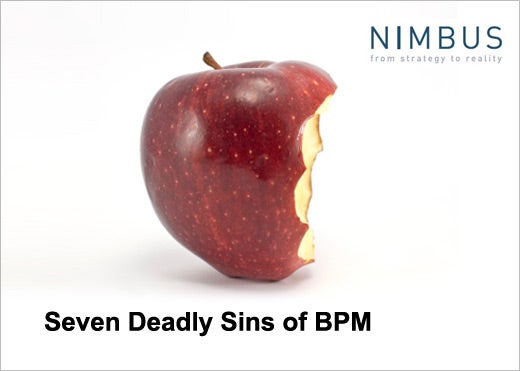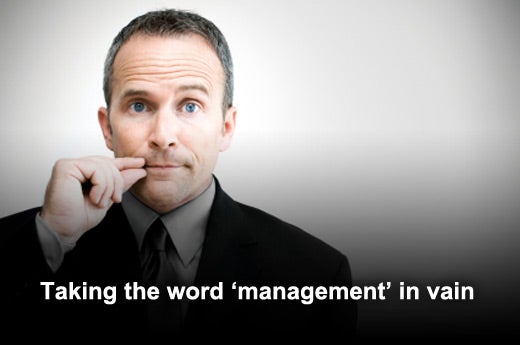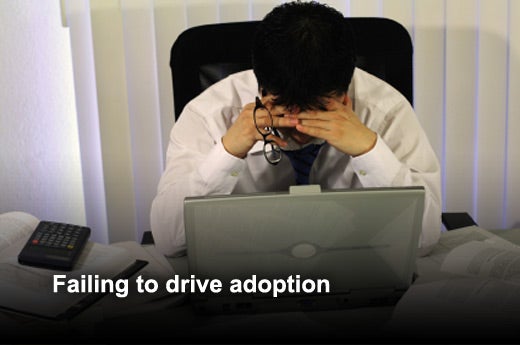Competitive pressure, the need to improve efficiency, the quest for agility and the need for compliance are all big drivers right now for business process management (BPM). BPM can help structure an organization with process governance and protocols that alleviate redundancies and create a more streamlined and efficient environment.
But not all BPM is created equally. Chris Taylor, head of consulting in North America for Nimbus (now part of TIBCO), believes that organizations must be aware of the possible downfalls of implementing a BPM campaign with inadequate focus on end-user adoption. This slideshow features the seven deadly sins of BPM that he has identified.
Click through for the seven deadly sins of BPM, as identified by Chris Taylor, head of consulting in North America for Nimbus (now part of TIBCO).
Be careful not to use the term “management” when you really mean automation. Automation is important but it doesn’t constitute management. Each process should be treated as an important asset and therefore owned, understood, correctly applied and improved continuously.
Ensure that work is done end-to-end to avoid being functionally siloed. Moving process management efforts from multiple silos to a shared enterprise asset improves efficiency and the capacity to leverage that asset far more powerfully. Process improvement works best if the whole organization works off a single source of the truth – a centrally managed repository for process.
Don’t start the BPM campaign process from a blank slate. Process frameworks were developed to avoid reinventing the wheel. Example frameworks include APQC’s PCF, ITIL and the Supply Chain Council’s SCOR Model.
Navigating process content on crude websites, intranets or in directory/folder structures can make it difficult to find what you’re looking for. Rather like context-sensitive help available from most application software, your process repository should offer you easy access to the process information you require in relation to a task or your role.
Make sure that the people accountable for the success of a process have the proper authority to approve and change what they own. Assigning ownership to each process is the key to making sure that it is governed and improved.
Process diagrams need context to give meaning to their symbols and lines. Many process tools are focused on automation and use notation that is hard for ordinary end users to understand – creating a real barrier to adoption.
Like all business change initiatives, you need long-term commitment to drive adoption. Make sure to launch campaigns and continue efforts to drive adoption to ensure the resulting resource becomes part of day-to-day operations for all employees.










